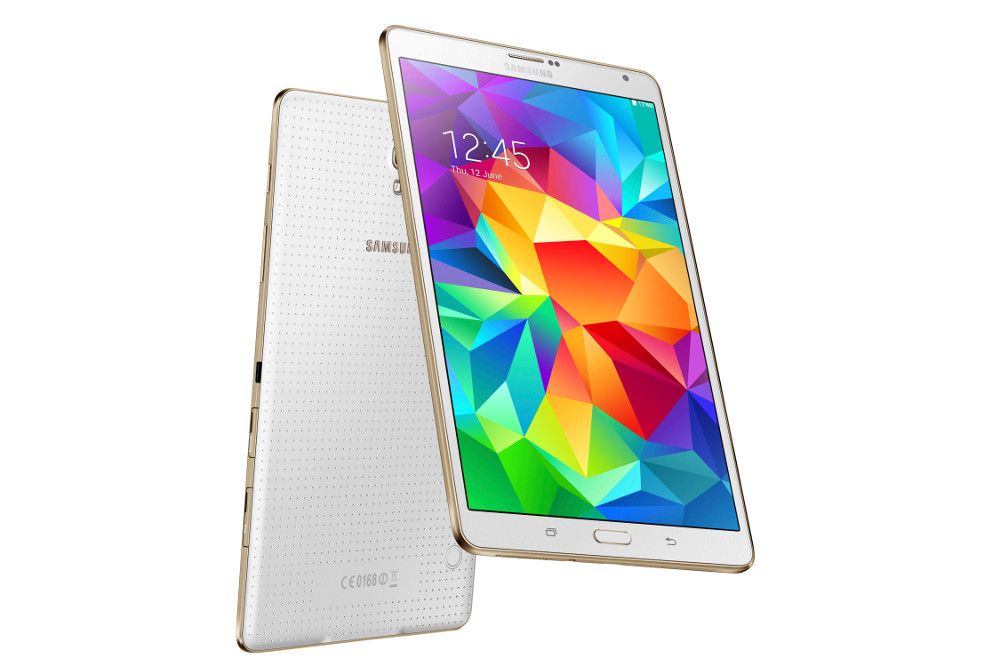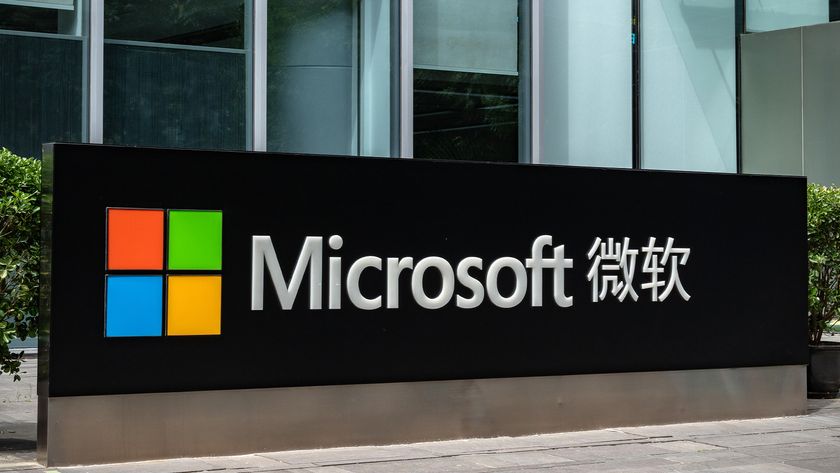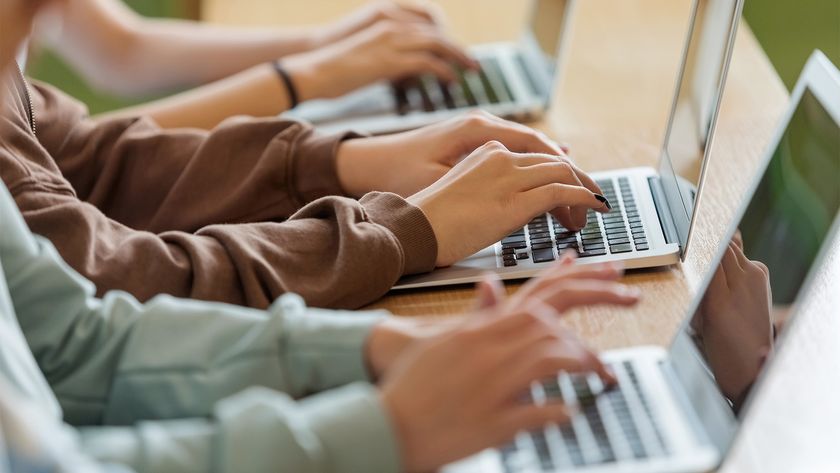IT Pro Verdict
Despite a few design niggles, Samsung’s latest tablet is simply superb. Excellent battery life and a a superlative display propel it to the top of the Android heap when it comes to tablets.
Pros
- +
Stunning screen quality; long-lasting battery
Cons
- -
Unnecessary software features; Small screen bezel leads to accidental inputs
Update 08/02/16: The Samsung Galaxy Tab S has now been largely replaced by its successor, the Galaxy Tab S2. Another 8-inch tablet, the S2 is a spectacular device that genuinely rival the iPad Mini 4.
It's not quite on the cutting edge of tablet hardware, but considering the common use cases for compact turrets, this is more than forgivable.
It also does a great job of delivering in the appearance and design arena, which is arguably more important. It looks fantastic, and is one of the most attractive tablets on the market.
However, both devices may be about to get some serious competition. The company is gearing up to release the Galaxy TabPro S, revealed at this year's CES.
A Windows 10 hybrid device, the Tab Pro S has its eye on the same business-focused market segment as Microsoft's Surface Pro 4 and the Apple iPad Pro.
Its internals boast some pretty good specs too, with an Intel Core-M CPU running at 2.2GHz, 4GB of RAM, and an SSD providing either 128GB or 256GB of onboard storage.
The display is 12 inches, with a Full-HD+ resolution of 2,160 x 1,440. Dimensions have been slimmed right the way down, meaning it comes in at just 6.3mm thick and weighs under 700g.
The tablet also features a full-size detachable keyboard and trackpad, along with 10.5 hours of battery life and a 6.3mm chassis. Charging and data are provided via a Type C USB 3.1 cable.
The tablet is due out in February, but Samsung has not specified a final date, and has not provided any indication of price.
Samsung Galaxy Tab S 8.4: screen
The biggest new feature of the Tab S 8.4 is its screen. It's one of the first tablets to use an AMOLED screen and it's stunning. While previous AMOLED screens suffered from fuzzy text and over-saturated, unrealistic looking colours that's not the case here. It's even sharper than the iPad Mini 2's screen due to its high 2560x1600 pixel resolution, while colours are vivid yet accurate looking.
It's also so bright that it's almost dazzlingly painful at full brightness. Samsung's claims of increased contrast allowing you to see otherwise hidden details in dimly lit videos and photos were baseless though. We saw no difference in either our own photos or in films with dark or gloomy scenes such as The Dark Knight and Alien.

Annoyingly, the Tab S has thin borders on the left and right hand sides of the screen (when held in portrait orientation) - much like the iPad Mini. This means there's little space to rest your fingers, so we often unintentionally triggered onscreen controls when we were merely resting our fingers. The iPad Mini has thumb rejection technology to counteract this, but the Tab S has nothing like it so you'll have to hold it more carefully.
Samsung Galaxy Tab S 8.4: build quality, performance and fingerprint reader
Unsurprisingly, the Tab S looks like a larger version of Samsung's Galaxy S5 smartphone with a dimpled plastic rear similar to the S5's. Although it's not as rigid or as classy looking as the iPad Mini 2's metal back, it feels less slippery in the hand and it is lightweight at just under 300g. Unusually, the Tab S has two circular holes for snapping Samsung's optional screen covers into place. These ungainly fastenings aren't as secure as the Mini's equivalent magnetic fixtures, with the covers coming away easily when jostled in a bag or handled roughly.
Like the S5, the Tab S has a fingerprint reader built into its home button making it one of the first Android tablets to have such a feature. It's not as fast and reliable as the iPad Mini 3's fingerprint reader though. It often needed a very slow and deliberate finger swipe and even there was no guarantee it would unlock the tablet.
Another feature shared with the S5 is its eight-core processor, the Exynos Octa 5420. It's actually two quad core processors joined together, with one processor slower but also more power efficient than the other. It takes over when you're not running very demanding apps, helping to save power. While the 5420 wasn't that much faster than the quickest quad core tablet processors in our benchmarks, it still did well. This made its responsiveness problems all the more surprising - it sometimes struggled to keep up with our finger movements as we scrolled through long websites and documents.
Samsung Galaxy Tab S 8.4: battery
We had no complaints about battery life though. It lasted 13 and a half hours when playing video continuously which is lengthy. Although it didn't quite match the 16 hours achieved by the Amazon Kindle Fire HDX 8.9, it exceeded the 10 and a half hours achieved by the iPad Mini 2.
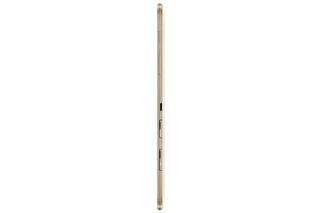
Bizarrely, the Tab S is surprisingly choosy about which chargers it will work with. It refused to work with our Lenovo and Apple USB chargers, but worked fine with our Amazon and Asus chargers. Another disappointment is the lack of a USB3 port for fast data transfers. USB3 is present on the Galaxy Note 3 so its absence here in favour of USB2 is odd.
Samsung Galaxy Tab S 8.4: software
The Tab S runs Android 4.4 KitKat, but with Samsung's TouchWiz interface added on top. Although TouchWiz is far less cluttered than it was before, it still has annoying features that you can't remove such as the widgets showing your calendar, inbox and news headlines. Far more useful is the file manager app which lets you transfer files between the tablet and your Dropbox. The Hancom Office app for working on Microsoft Office documents is also included.
The Tab S also comes with SideSync, an app that lets you use the tablet with other devices in interesting ways. For example, you can control the tablet using your Windows computer's keyboard and mouse so you could, for example, reply to text messages using your larger and more comfortable computer keyboard. You can also view the tablet's screen in a window on your Windows desktop and drag and drop files between the two, although this is less useful - especially as you can already easily transfer files without SideSync.
This latest version of SideSync, 3.0, lets you control your Android smartphone from your Tab S. You can even make and receive calls on your tablet, although we could only make this work with a Galaxy S5. It's a clever feature, although it's unlikely to see much use unless you frequently use your tablet in another part of your home or office away from your phone.
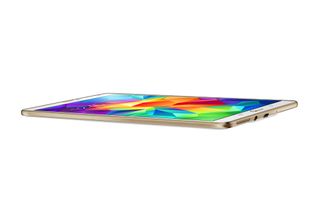
Like previous Galaxy Tabs, you can use two apps side-by-side on the Tab S. Although this can feel cramped on the relatively small 8.4in screen, apps run far more smoothly in this mode than they did on older Tabs with none of the slow performance and laggy responsiveness that previously blighted this feature. As a result, it's much more usable and useful than before.
Samsung Galaxy Tab S 8.4: conclusions
Although some of the Galaxy Tab S 8.4's software additions are of questionable value and it has a few design flaws, it's a great tablet nevertheless. Battery life and screen quality are top-notch, making it one of the best Android tablets available.
Verdict
Despite a few design niggles, Samsung’s latest tablet is simply superb. Excellent battery life and a a superlative display propel it to the top of the Android heap when it comes to tablets.
OS: Android 4.4 KitKat
Display: 8.4in 2560 x 1600 display
Processor: 1.9 + 1.3 GHz Samsung Exynos Octa 5420 eight core processor
Memory: 3GB
Storage: 16GB
Dimensions: (WxHxD) 126 x 213 x 7mm
Weight: 294g
